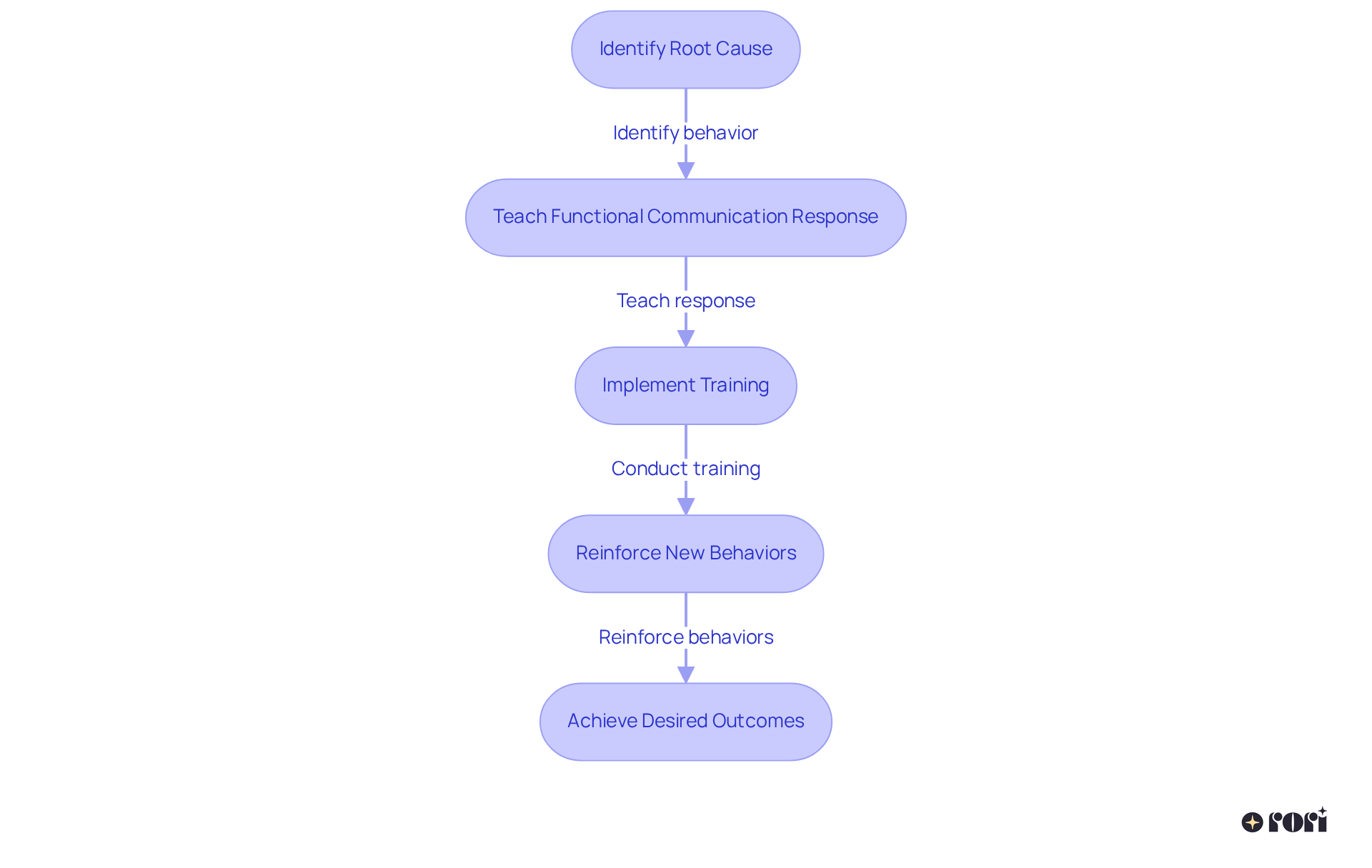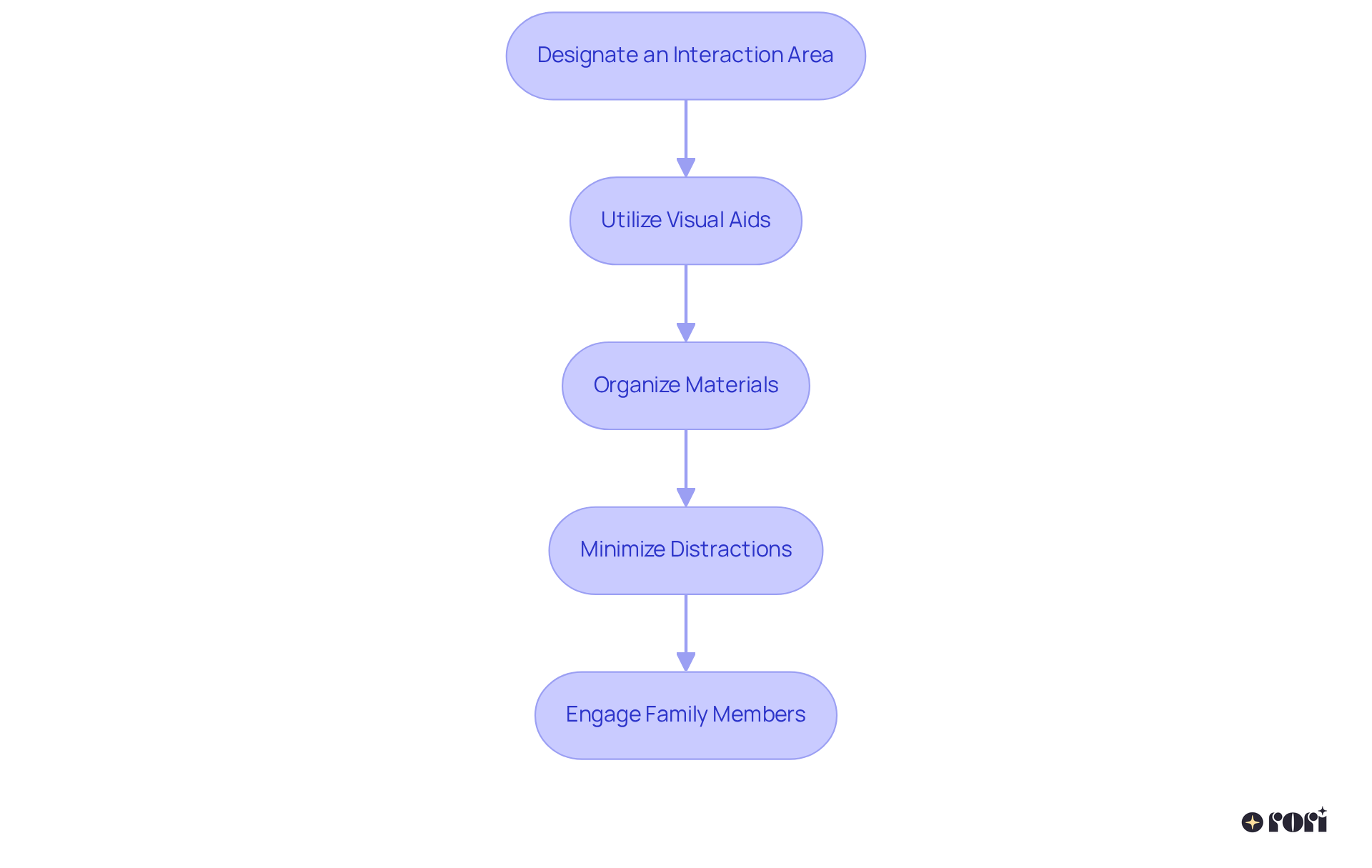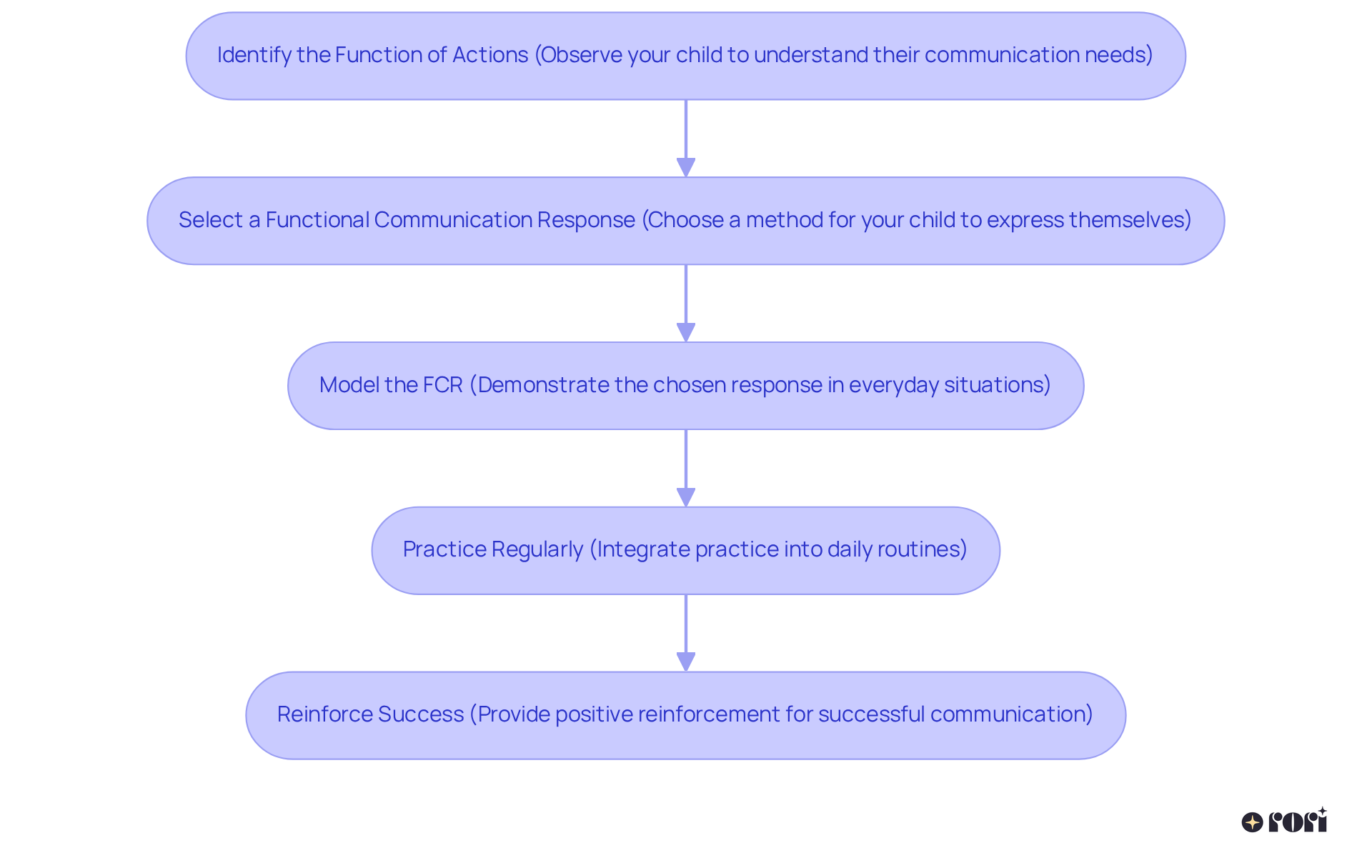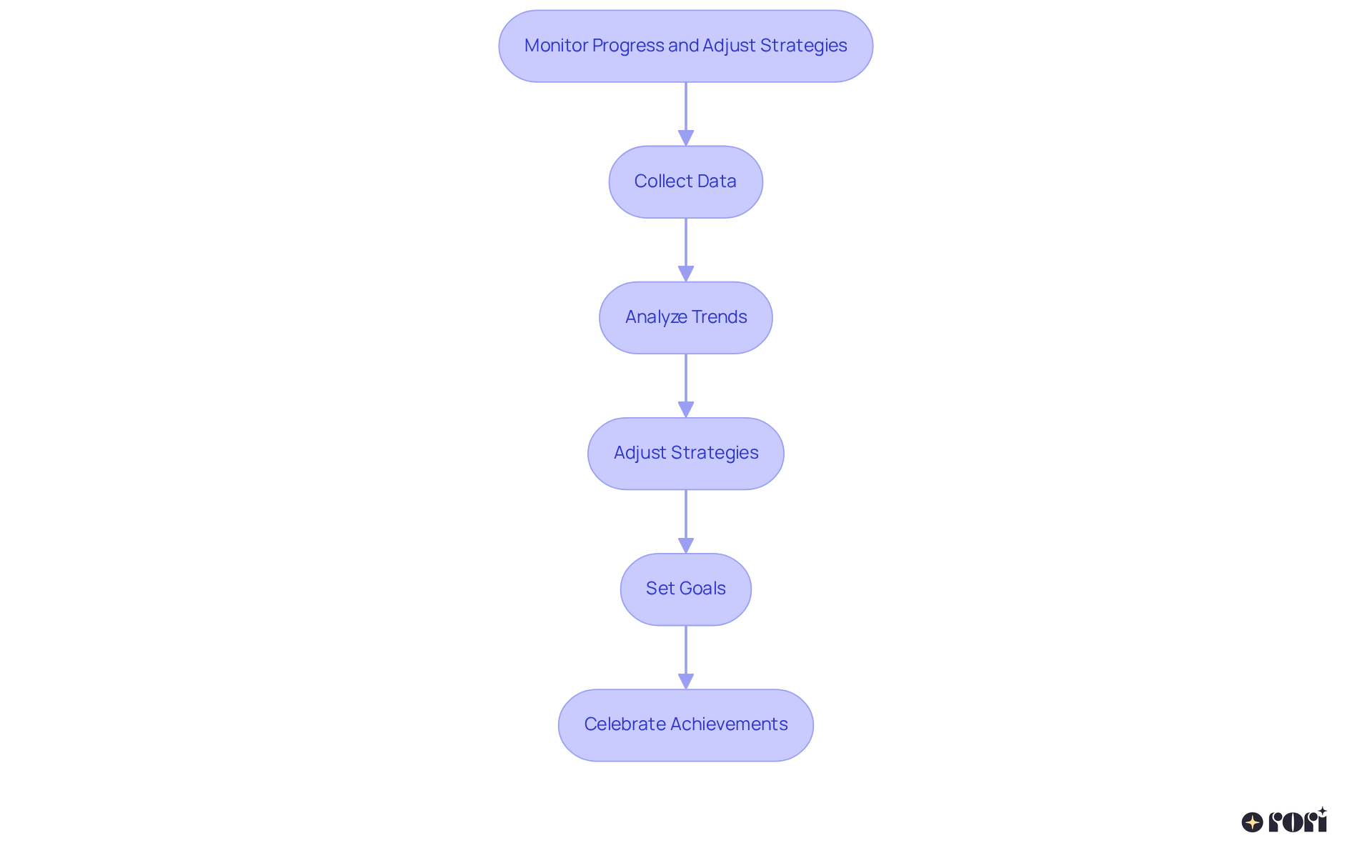Functional Communication Training (FCT) is a wonderful behavioral intervention that helps children with autism express their needs effectively. This, in turn, can reduce challenging behaviors like tantrums and aggression. 🌟
In this article, we’ll explore some practical steps for parents to implement FCT. For instance:
These strategies not only enhance communication skills but also improve social interactions, making life a little easier for everyone involved.
Let’s dive into this together and discover how FCT can be a game-changer for your child’s communication journey!
Functional Communication Training (FCT) is a game-changer for parents eager to boost their child's communication skills, especially for those with autism. 🌟 By focusing on swapping out challenging behaviors for functional communication strategies, FCT helps children express their needs in a positive way. This not only enhances social interactions but also paves the way for a better quality of life.
But let’s be honest—implementing FCT can feel overwhelming. How can parents effectively nurture communication in their home while keeping track of progress and adapting strategies along the way? Let’s explore this together! We’re here to help you every step of the way!
Functional communication training (FCT) is a targeted behavioral intervention aimed at helping children with autism effectively express their needs and desires. The main goal of functional communication training (FCT) is to replace challenging behaviors—such as tantrums or aggression—with appropriate ways to communicate. This is done by identifying the root cause of the difficult behavior and teaching a functional communication response (FCR) that meets the same need. For example, if a child throws a toy out of frustration, FCT encourages them to use words, gestures, or picture cards to express that frustration instead.
Studies show that functional communication training (FCT) can lead to significant reductions in challenging behaviors. In one study, instances of aggression dropped from 15 to just 4 per week, while tantrums decreased from 10 to 2 per week after the implementation of functional communication training (FCT). Additionally, non-compliance fell from 12 to 3 per week, highlighting the overall effectiveness of this approach. Not only does this method reduce disruptive behaviors, but it also enhances a child’s social interactions and their ability to communicate effectively.
The success of functional communication training (FCT) is further supported by evidence showing that consistent implementation by trained professionals, caregivers, and teachers facilitates the transfer of these skills across different settings, such as home and school. For instance, a telehealth model of FCT achieved an impressive 98% average decrease in issues compared to traditional treatment methods. This demonstrates how accessible and effective functional communication training (FCT) can be, making it a fantastic resource for families.
Reinforcement is key in FCT, encouraging kids to adopt new ways of expressing themselves. Immediate rewards, such as praise or access to favorite items, help solidify these new behaviors, ensuring they stick around over time.
Ultimately, functional communication training (FCT) empowers children with autism by fostering essential communication skills, which leads to better social interactions, increased independence, and an overall improved quality of life. As Steven Zauderer, CEO & Founder of Rori Behavioral Innovations Inc., puts it, 'The ultimate goal of functional communication training (FCT) is to reduce maladaptive behaviors by teaching meaningful and functional ways to express needs, thereby improving social interactions, increasing independence, and decreasing frustration.' By focusing on functional communication, parents can support their children in expressing their needs appropriately, reducing frustration and enhancing overall well-being. Let’s explore this together!

To effectively implement functional communication training (FCT), it is key to prepare your home environment. Let’s explore some steps together:
Designate an Interaction Area: Create a cozy space in your home for discussion activities. This area should be free from distractions and stocked with handy materials like visual aids or interaction tools.
Utilize Visual Aids: Incorporate visual aids such as picture exchange systems (PECS) or choice boards. These tools can really help your little one express their needs more effectively.
Organize Materials: Keep those interaction tools neat and easily accessible. Think about toys, books, or any items your child might want to request.
Minimize Distractions: Try to reduce background noise and visual interruptions in the interaction area. This will help your kid focus on what’s important.
Engage Family Members: Make sure everyone in the family understands the FCT process and encourage them to join in on interaction activities with your child.
By taking these steps, you’re creating a supportive environment that fosters communication. We’re here to help you every step of the way!

Implementing Functional Communication Training (FCT) techniques can feel like a journey, but it involves several essential steps that can make a real difference for your child:
Identify the Function of Actions: Start by carefully observing your child. What are they trying to communicate through their challenging actions? Understanding this underlying function is crucial for teaching effective response techniques. The American Academy of Pediatrics highlights that recognizing the purpose of actions is a vital first step in effective intervention.
Select a Functional Communication Response (FCR): Choose a way for your child to express themselves that serves the same purpose as their challenging behavior. This could be verbal requests, gestures, or even picture cards, tailored to their abilities. Research shows that kids using functional communication training (FCT) can significantly boost their communication skills. In fact, studies reveal that up to 78.8% of school-age autistic children show progress in at least one developmental area by age 10!
Model the FCR: Demonstrate the chosen FCR in everyday situations. For instance, if your child wants a snack, show them how to ask for it using the selected method. This strengthens the connection between their action and the desired outcome. A BCBA emphasizes this, stating, "Children learn best when they see the desired behavior in action."
Practice Regularly: Make practice a part of your daily routine. Use mealtime, playtime, or other activities as chances for your child to use their FCR. This consistent exposure helps reinforce the skill and integrates it into their everyday life.
Reinforce Success: When your child successfully uses the FCR, offer immediate positive reinforcement. This could be verbal praise, a small reward, or access to what they wanted. Such reinforcement encourages them to keep using this effective way of communicating. Research indicates that positive reinforcement can lead to a 50% increase in the use of functional responses among children with autism.
By focusing on these steps, you can create a supportive environment that fosters effective communication and utilizes functional communication training (FCT) to reduce challenging behaviors. These techniques not only help with communication but also enhance social interactions, leading to a more fulfilling life for individuals with autism. Let’s explore this together and make a positive impact on your child’s communication journey!

Monitoring your child’s progress in functional communication training (FCT) is crucial for understanding the effectiveness of the training. Let’s explore some steps to make sure you’re covering all the bases:
Collect Data: Keep a close eye on how often your child uses Functional Communication Responses (FCR). It’s helpful to jot down when they use these responses and any challenging behaviors that come up. Research shows that ABA-based interventions can really boost communication skills, with a standardized mean difference of d=0.30 for communication outcomes and d=-3.52 for expressive language.
Analyze Trends: Take some time to regularly look over the data you’ve collected. Are there certain times or situations where your child seems to struggle with their FCR? Recognizing these trends can help you make the necessary adjustments, as ongoing data collection is key to tracking progress and assessing how well the intervention is working.
Adjust Strategies: Based on what you find, feel free to tweak your strategies. If your child isn’t responding well to a particular FCR, think about trying out different methods or providing extra support. Using various data gathering techniques, like direct observation and ABC data collection, can give you deeper insights into your child’s behavior and progress.
Set Goals: It’s great to set specific, measurable goals for your child’s communication development. For example, aim for your child to use functional communication training (FCT) independently in 80% of opportunities within a month. Having clear objectives can really boost motivation and focus during training.
Celebrate Achievements: Don’t forget to acknowledge and celebrate your child’s progress, no matter how small it may seem. Positive reinforcement is a fantastic motivator that encourages continued growth in communication skills. Recognizing achievements helps create a supportive environment that nurtures further development.
Let’s keep this journey going together! Your involvement makes a huge difference!

Functional Communication Training (FCT) is truly a game-changer for children with autism. It empowers them to express their needs in positive ways, moving away from challenging behaviors. By focusing on effective communication methods, FCT not only helps reduce disruptive actions but also enhances social interactions and improves the overall quality of life for these children.
In this article, we've explored key strategies for implementing FCT. From creating a supportive home environment to identifying functional communication responses and emphasizing reinforcement, these steps are essential. Keeping track of progress and adjusting based on collected data ensures that the training is effective and tailored to each child's unique needs. The positive outcomes of FCT, backed by research and real-life applications, highlight its crucial role in developing vital communication skills.
But remember, the journey of implementing Functional Communication Training goes beyond just reducing challenging behaviors. It’s about empowering children to communicate confidently and effectively. This approach encourages parents and caregivers to actively engage in their child’s development, fostering a nurturing environment that promotes growth and independence. By embracing these techniques, families can profoundly impact their child's communication skills, paving the way for improved social interactions and a richer quality of life.
So, let’s explore this together! Your involvement can make all the difference in your child’s journey toward effective communication. We’re here to help you every step of the way!
What is functional communication training (FCT)?
Functional communication training (FCT) is a behavioral intervention designed to help children with autism express their needs and desires effectively, replacing challenging behaviors with appropriate communication methods.
What is the primary goal of FCT?
The main goal of FCT is to replace challenging behaviors, such as tantrums or aggression, with functional communication responses that meet the same needs.
How does FCT address challenging behaviors?
FCT identifies the root cause of challenging behaviors and teaches children to use words, gestures, or picture cards to express their feelings instead of resorting to disruptive actions.
What evidence supports the effectiveness of FCT?
Studies show significant reductions in challenging behaviors after implementing FCT, including a decrease in aggression from 15 to 4 instances per week and tantrums from 10 to 2 per week.
How does FCT impact social interactions and communication?
FCT not only reduces disruptive behaviors but also enhances a child's social interactions and their ability to communicate effectively.
Who should implement FCT for it to be successful?
Consistent implementation by trained professionals, caregivers, and teachers is crucial for successfully transferring communication skills across different settings, such as home and school.
What is the impact of telehealth models of FCT?
A telehealth model of FCT has shown an impressive 98% average decrease in issues compared to traditional treatment methods, demonstrating its accessibility and effectiveness.
What role does reinforcement play in FCT?
Reinforcement is key in FCT, as immediate rewards like praise or access to favorite items encourage children to adopt and maintain new communication behaviors over time.
What are the long-term benefits of FCT for children with autism?
FCT empowers children by fostering essential communication skills, leading to better social interactions, increased independence, and an overall improved quality of life.